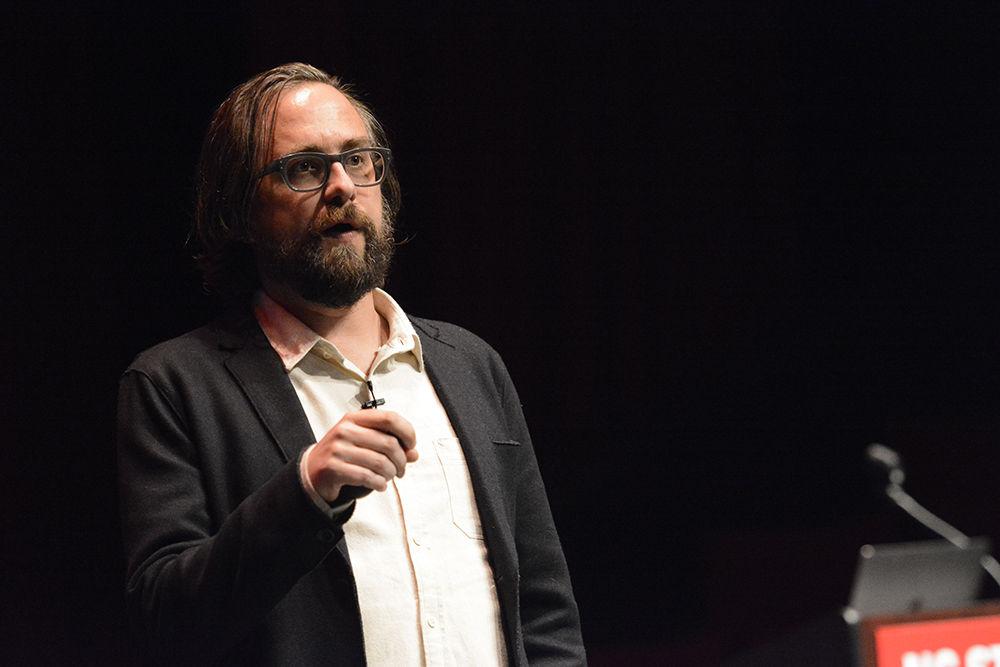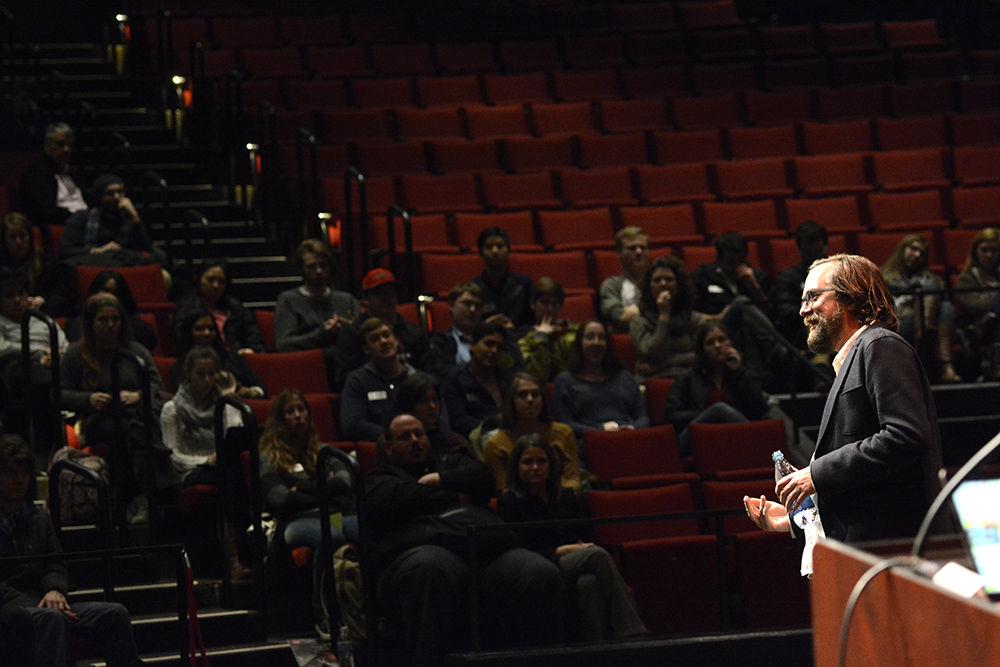Data artist, former National Geographic Fellow and current Innovator-in-Residence of the Library of Congress Jer Thorp was hosted in Stewart Theatre Tuesday evening as part of the “Goodnight Scholars Program Presents Speaker Series,” where he explored the changing technological landscape and challenges for humans “living in data.”
“What is it to live in data? It is to be used, to be overwhelmed by complexity,” Thorp said, “Technology is often not being made with the good of the people in mind.”
Thorp’s work has appeared in various publications including The New Yorker, Harvard Review and Wired.
“When I say I, it’s always a we,” Thorp said. “I have a team of collaborators behind me. This is not something I do alone on a computer in my basement.”
Thorp detailed various data-intensive projects he has worked on throughout his career including a “Map Room” he set up in a school in St. Louis to educate school children in the community on the legacy of “redline” maps bankers used in the 1940s to illustrate predominantly African-American areas for which their employees were not to grant mortgages.
Thorp illustrated modern maps showing modern St. Louis still heavily split into African-American and white neighborhoods with maps of modern unemployment rates in the city almost mirroring the 70-year-old redline maps. The mayor of St. Louis proclaimed April 14 “St. Louis Map Day” in recognition of the project.
“I’m pretty excited about Jer’s theme of humanizing data,” said Sean Nicol, a third-year Goodnight Scholar studying civil engineering and Spanish. “He presented a great perspective of interacting with our own data experience, understanding how we contribute and also understanding how we derive conclusions from everyone else’s data. It gives us a better understanding of ourselves and also the people around us.”
Thorp’s other work includes a study of the linkage between patients with chronic pain diseases, such as arthritis, and the weather highlighting the increasing severity of their conditions in various climate conditions based on pooled data sets. The results of this study are not yet available for public release.
“What’s most interesting for me is where the data sets that we have come from and that data is only aggregated when it can make someone money,” said Alana Allekote, a technology support technician in the Office of Registration and Records who attended the lecture. “So, how do you get access to these data sets if you’re not someone who’s trying to make money?”
Student attendance was high, particularly by members of the Goodnight Scholars Program who hosted the lecture.
“I kind of like looking at art,” said Josh Jimison, a second-year studying chemical engineering and a Goodnight Scholar. “I’m one of those nerds who enjoys that, so the fact that he was able to interpret just words and numbers that could be boring to someone else and put it on the big screen was pretty intriguing.”
Thorp expressed that he was glad to have the opportunity to speak at schools and universities and offered a bit of advice in closing.
“There’s a future ahead of us that hasn’t been set yet and my generation messed up with regard to technology but I’m done now,” Thorp said. “We’re done. It’s up to you guys to ask what kind of world you want to live in. Read books. Read lots of books, and no path in life is less interesting than the deliberate path.”
Data artist Jer Thorp speaks at Stewart Theater on Tuesday. Thorp's presentation was featured as part of the "Goodnight Scholars Program Presents Speaker Series." As the Innovator-In-Residence at the Library of Congress, and the most popular data artist in America, Thorp's lecture included visual artistic creations derived from various sets of data in an effort to humanize data and extract patterns and narratives from hard numbers and statistics.









